The mindset shifts needed for successful founder-led sales
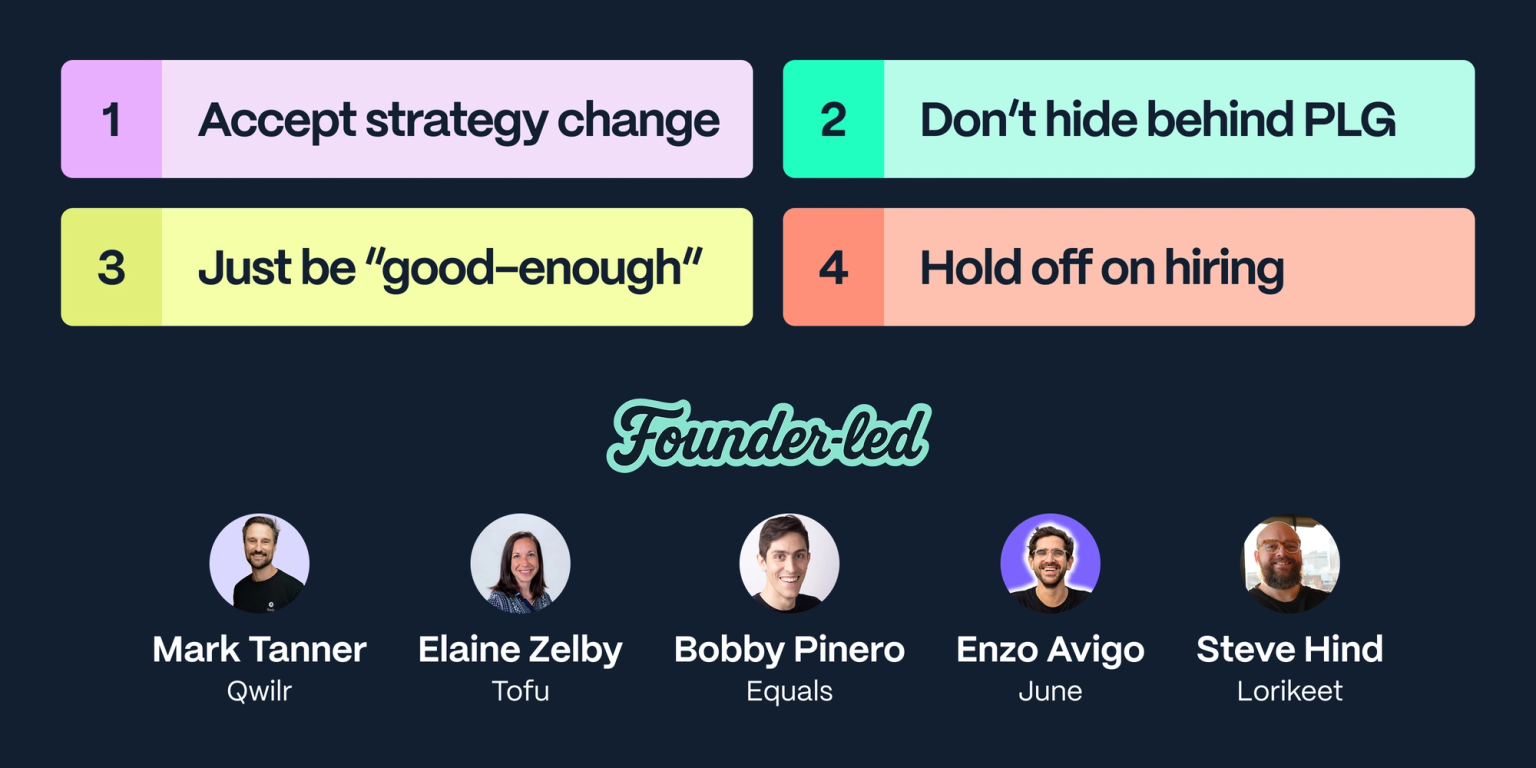
When I was running my first company, Iteratively, I learned a valuable lesson the hard way. It turned me from a skeptic into a believer that sales is my #1 job as a founder.
Early on, we landed Carta as a design partner, and it was the kind of relationship founders kill for. Great logo, engaged team. Dozens of Carta employees using the product and asking for features.
But we ignored them. We were stubborn about product direction. And guess what? After three months, Carta churned and built their own solution.
I reread their feedback a year later, and we should have built every single thing they asked for. Hundreds of customer calls afterward made Carta’s point: I didn’t know better than the market.
“Doing sales” is the fastest way to hear the truth about your market. Founders need conviction, but we can’t be blinded by it. And these early sales feedback loops can make or break a company.
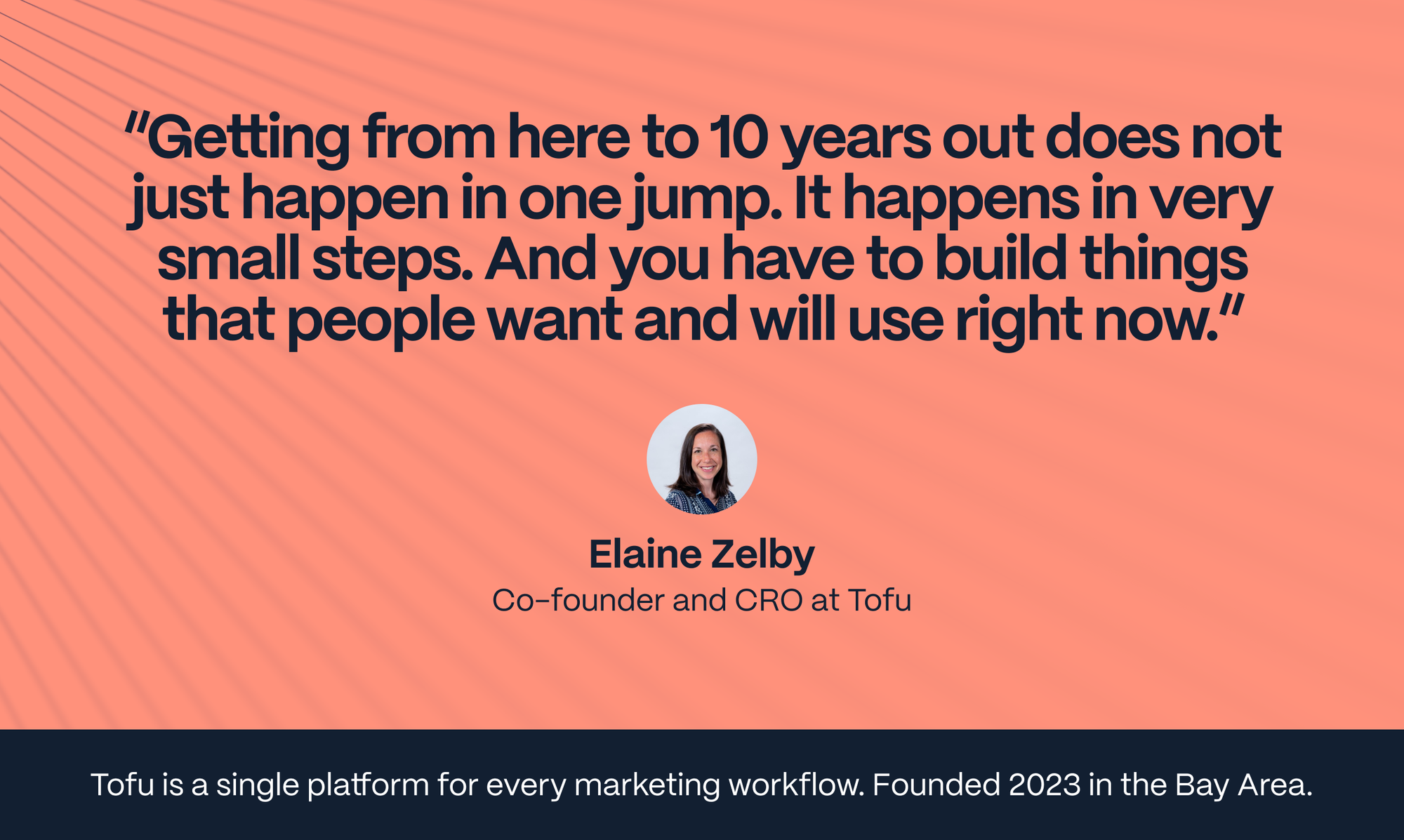
My friend Elaine Zelby, co-founder of Tofu (a Series A 1:1 ABM platform), puts it like this:
The whole point of being a founder is to have some vision around where the puck is going and see around a corner five to 10 years out.
You get there by listening to your customers, listening to your prospects, and understanding how things are trending.
I’ve come a long way since losing Carta. I’ve built things I swore I would never build because I started listening to my customers. Today, at Clarify, we use sales as that forcing function. It’s the backbone of our continuous discovery process to challenge our risky assumptions about what we build.
I can relate to founders who want to push sales off their plate as soon as humanly possible. But if I want to get over my ego and blind spots, I need to be in at least 10 calls a week, getting kicked in the shins underneath the table, hearing what customers are screaming for.
I’ve heard similar themes among my founder friends. So here’s how I changed my mindset about sales, plus some wisdom from other founders of seed-to-Series A companies from around the world – including Lorikeet, Tofu, Equals, Qwilr, and June.
1. Accept your strategy will change
After losing our first marquee customer at Iteratively, I realized you have to expect surprising changes to what you build, who you build it for, or how you take it to market. 99% of founders will be wrong about things like:
- Product use cases
- Market segment: enterprise, midmarket, SMB, etc.
- B2B or B2C
- Vertical/industry
- Job title or seniority of your buyer, user, champion
- Go to market motion: product-led, sales-led, marketing-led, etc.
- Sales motion: outbound vs inbound
For example, I never wanted to build automated outbound features into Clarify, but it’s literally the #1 thing our customers are asking for. Eventually I got over myself and created a pod to focus on that.
Another example. Equals co-founder Bobby Pinero built one of the most horizontal, universally useful products possible: a next-generation spreadsheet.
Bobby recalls, “I thought it was like, okay, we built the product. Let the market rip. People should get it.”
But it was too broad and people didn’t get what they should use it for. Equals realized they had to focus on specific use cases for a specific audience in order to get early traction. And that direction came straight from the sales process.
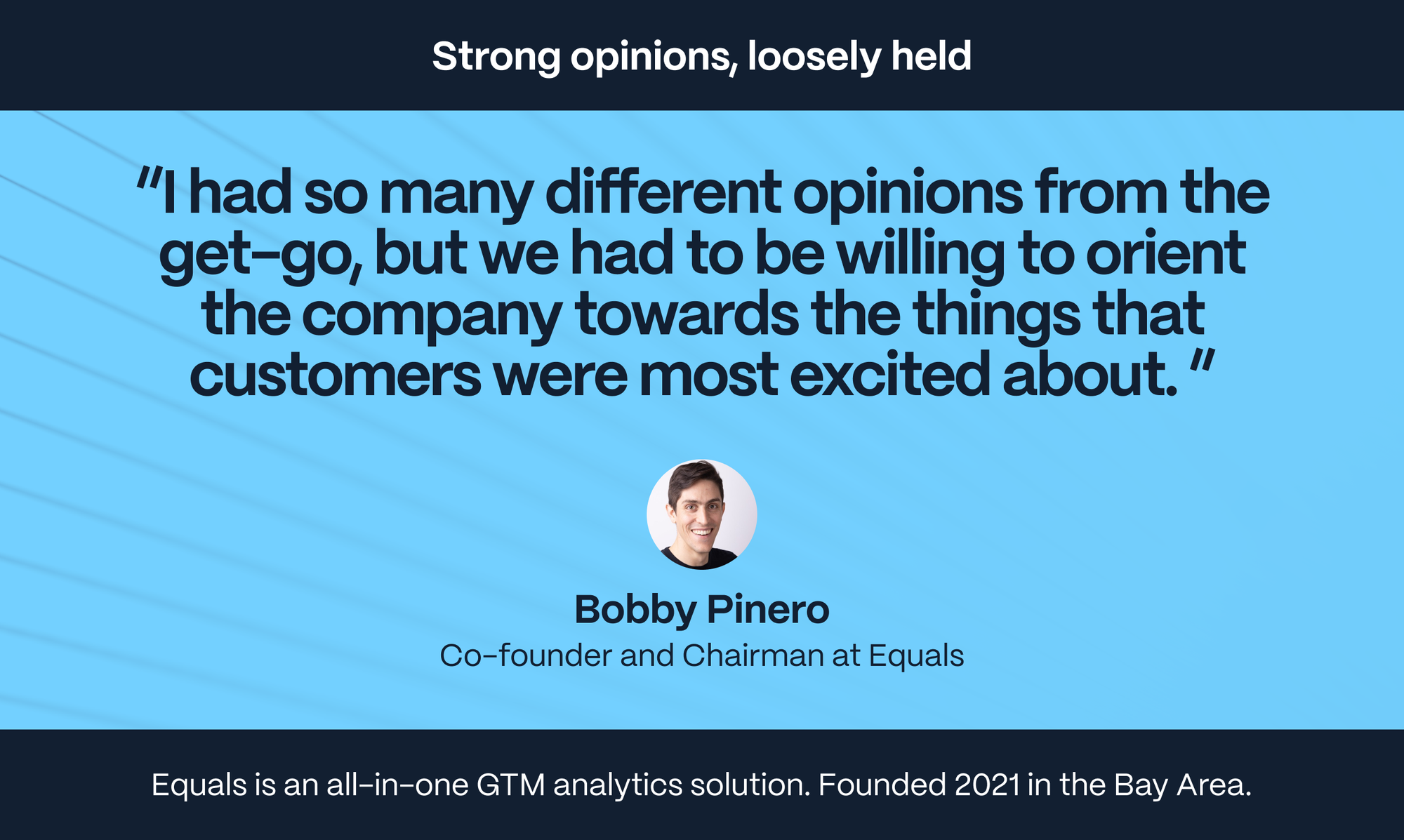
We had to stay curious about the sales process and the onboarding process. What do people come to us for? Which use cases are most powerful? What are the flavors of deals that move fastest through the funnel? What are flavors of deals where people get onboarded and continue using the product?
We had to get pretty open-minded about that. I joined every sales call, every onboarding call, and talked to customers afterwards. We paid attention to when they lit up, and when they wanted to get things done tomorrow instead of three weeks from now.
- Bobby Pinero, Co-founder at Equals
Equals decided to focus on first finance hires, early RevOps, or founders at small companies who want better visibility into their SaaS metrics, often before raising money. The fundamental bet of the company – that the spreadsheet is the best place to do any analysis – has stayed the same. The way they’re bringing it to market changed.
Mark Tanner, co-founder of Qwilr, also gave up a big TAM for his horizontal product to focus on specific segments at first.
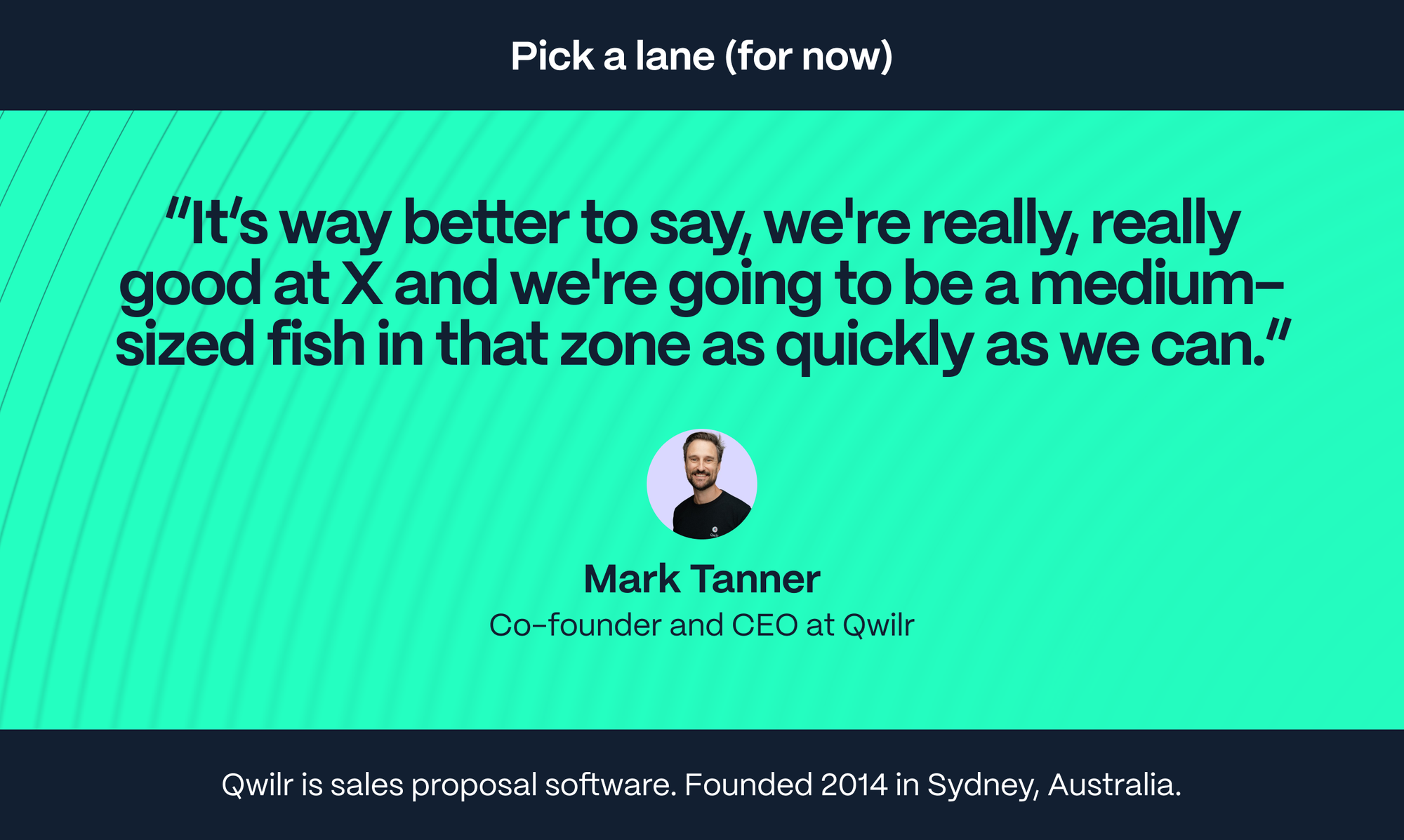
Everyone says this, but it's incredibly difficult to fully internalize until you’ve been through it.
I remember finding three or four niches that worked very well for us and expanding it slowly from there. We spoke to lots of people to understand how they were using our product, and did some quantitative analysis to pattern-match, finding industries and titles that were overrepresented.
- Mark Tanner, Co-founder and CEO at Qwilr
At Clarify, our ICP has narrowed to early-stage startup founders – but Elaine went the other way at Tofu.
We no longer sell to startups and have a floor of 200 employees. I’ll tell you why: startups buy a tool thinking they’re buying strategy and a human. The reality is, there is no tool on the planet that is going to provide you with a strategy and execute on it. This was a very consistent finding. People think AI is a magic pill.
Despite our price point being quite high, startups still want to buy us, and now I tell them that they first need a person or need to create a strategy.
At enterprises, there’s more specialization, so a company might have 40 people getting value from Tofu in different ways. One person might use it for field marketing and event follow-up, while another is creating 2,000 one-to-one ABM landing pages. The organization as a whole is getting a tremendous amount of value.
Listening to customers doesn’t mean abandoning your vision — it’s about finding the path to market that will actually get you there.
2. Don’t hide behind PLG
In the last few years, I’ve seen founders try to shortcut the early sales process using product-led growth to upsell people within the product itself. Who needs sales?
But you can’t skip the part where you talk to customers and prospects every single day. You might also learn that sales delivers value in a way that PLG can’t. 🙊
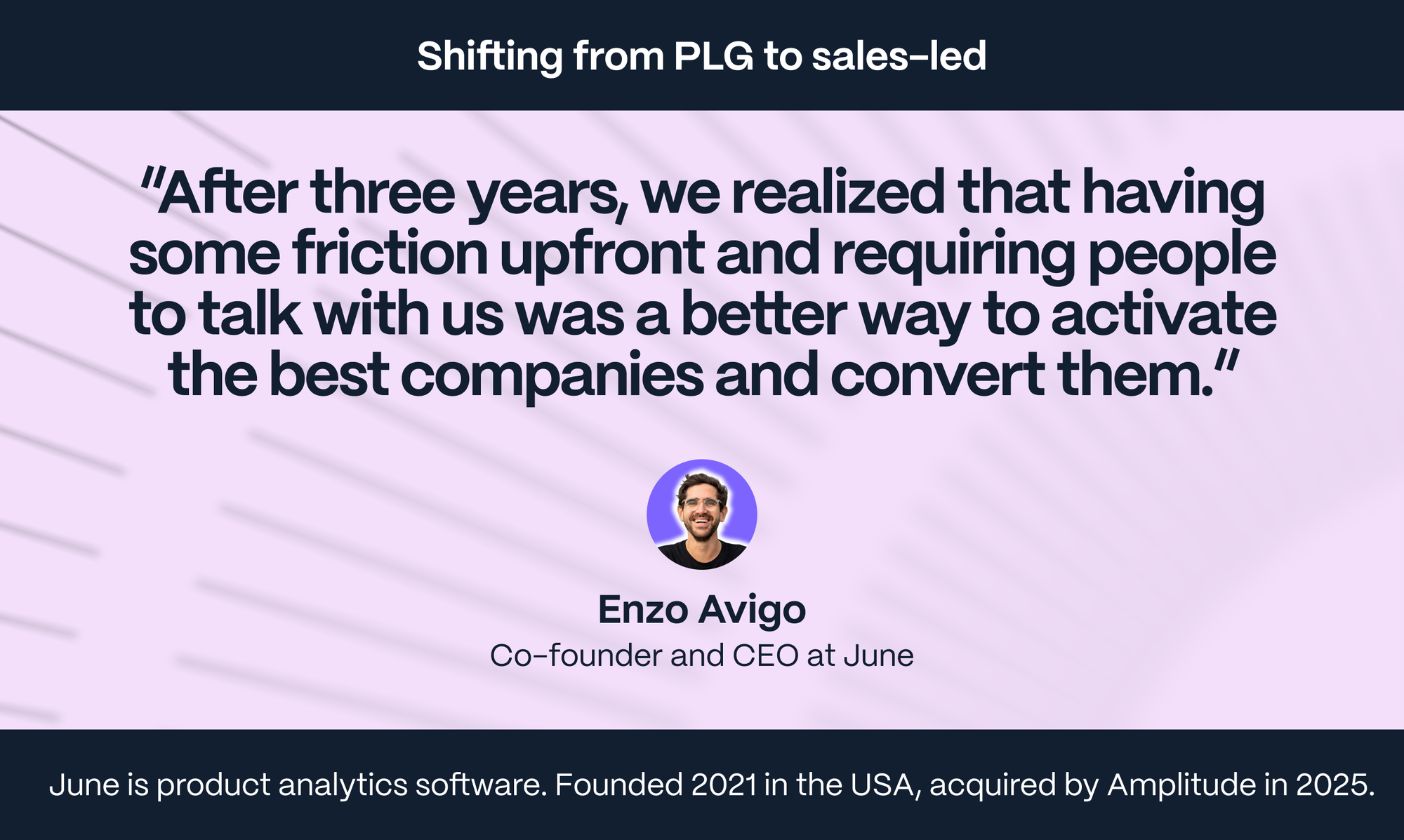
That was counterintuitive for me, coming from a product background. I learned the value of salespeople in the company; they’re solving problems. A great self-serve product doesn’t necessarily deliver more value in 30 minutes than a great call.
- Enzo Avigo, Co-founder and CEO of June
The reasons that a more friction-filed sales-led motion at first may be a better call for your company:
- Money is a bullshit detector. When you show people the product for “feedback,” they will smile and nod. But when you ask them to hand over money for it, that’s when the real talk begins.
- PLG can lead to early churn. In 2022, Equals famously announced a free plan and no longer required an onboarding call. At first they saw signups 4x, but they struggled to retain and monetize those customers. It almost tanked the business until Equals reintroduced friction into onboarding. For some companies, a high-touch process filters for an engaged userbase. And if your product is still underdeveloped, you’ll want to know why some users log in once, get confused, and never come back.
- People buy from people. When your product is still rough around the edges, you’re not just selling software. You’re selling trust. People are buying the vision of what you're building — this movement you're creating.
- You may miss out on the enterprise. Large companies are used to having their hands held. If you lead with PLG – even if you intend to step in with a sales assist motion later — you may miss the only opportunity you’ll get to wow them.
Instead, be as hands on as possible at first.
Steve Hind, co-founder of Lorikeet, an AI-powered CX concierge, has a one-two approach: first a discovery call and then they share a custom demo trained on the customer’s data.
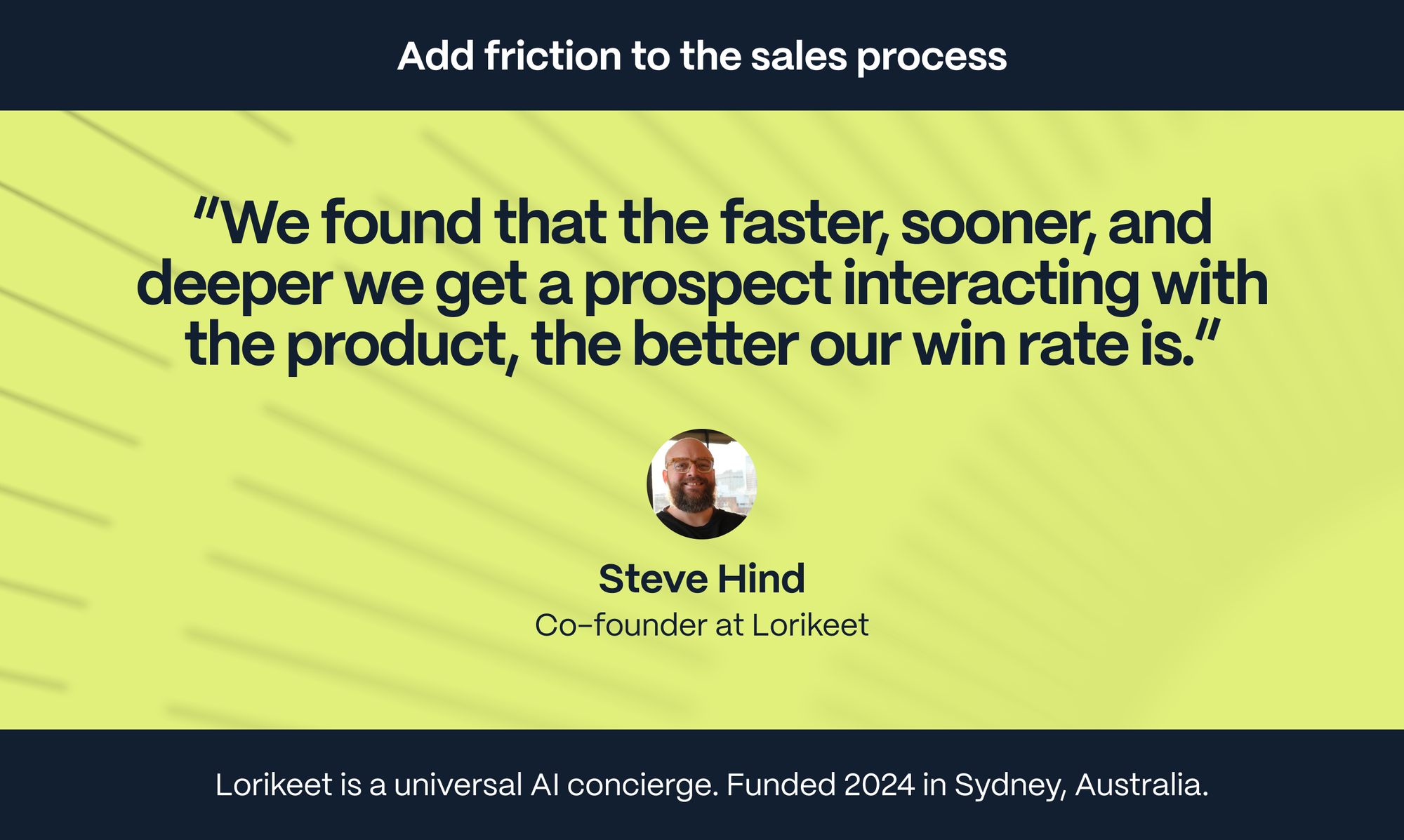
We try to frame our sales process around accelerating to that point of a custom demo.
We want that demo moment to be really about challenging their perceptions of how good the AI can be by showing them something that they didn't think AI would be able to do.
That obviously takes some time, and we do product and engineering work to make that faster, but we think it's really high ROI.
Similarly, June would not let you touch the product before talking to a salesperson so they could better understand your use cases. Tofu creates a custom demo instance featuring 10 real target customers for their prospect. Equals has a team of full-time “Equals Experts” building out the customer's first analysis to show them what’s possible.
“The prospect would be like, ‘Holy shit, I've never seen [this ARR report] before in my business,’” says Bobby. “So we’d say ‘Great, you can play with it for a week. And if you want to keep it after that, sign the contract.’”
Even if you’re set on PLG, remember there’s a value exchange in sales: the customer gets quick answers and eye-opening demos. The founder can handle objections in real time and get incredible insights. It sets you up for a stronger PLG motion later.
3. Be the “good-enough” salesperson
Sales is figure-out-able. You can do it. Some people learn from books – I’m a fan of To Sell Is Human. Bobby likes Spin Selling. Elaine likes FBI hostage negotiator Chris Voss’s Never Split the Difference. There are sales frameworks you can follow, like BANT and MEDDPICC. You can also hire a coach or join a bootcamp.
But don’t think you can skip doing sales. You’ll make mistakes along the way, but the learnings will be invaluable. You don’t need to be the best seller in the world, just the best for your company.
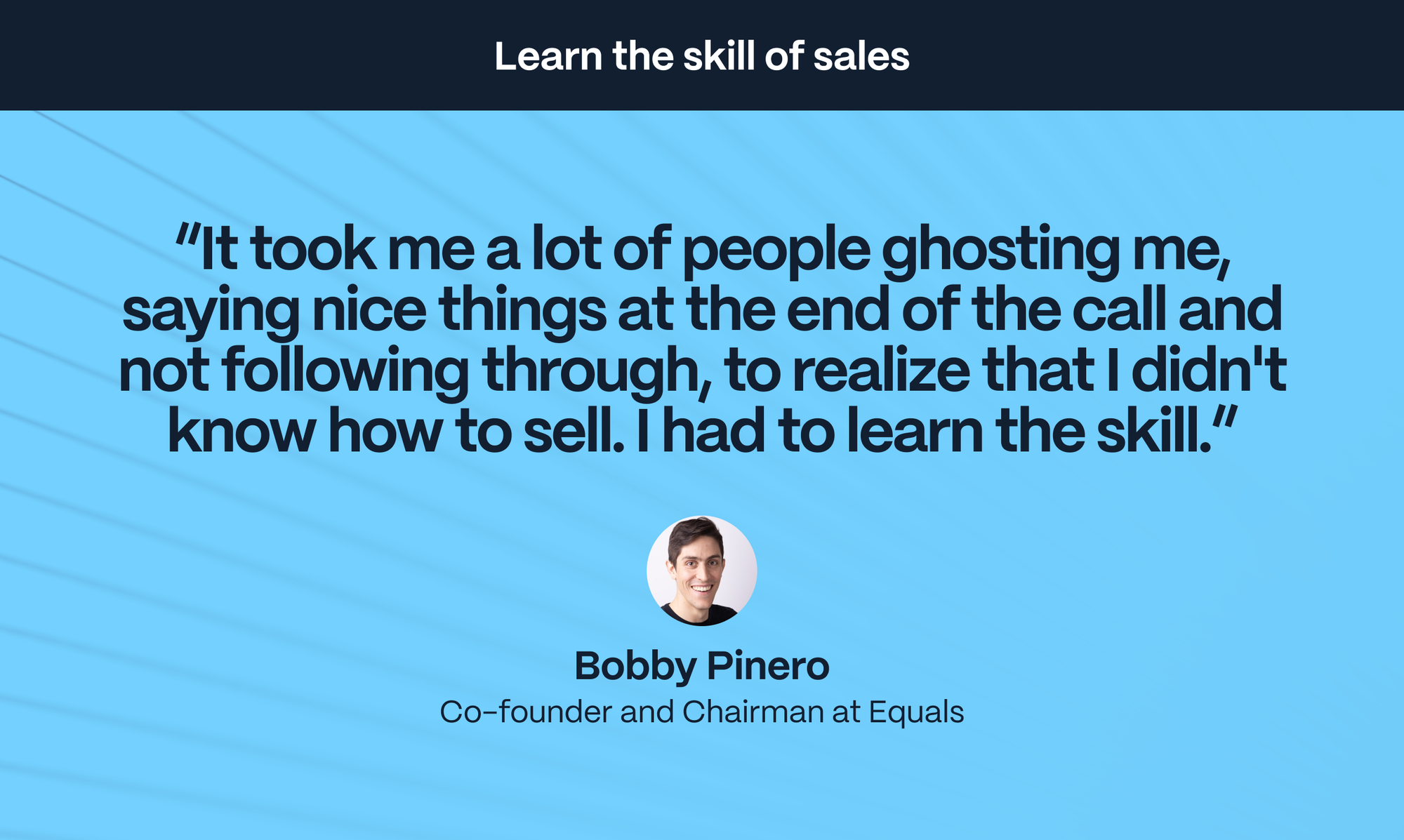
I was not a salesperson to start off with. The first 18 months of selling Equals was me doing the same stupid thing over and over and over again, and not realizing the mistakes I was making. I would jump straight into a product demo – ‘look at these features, look at all these cool things you could do.’
- Bobby Pinero, Co-founder at Equals
Most founders who are good at selling probably started where you are now. And if you think you’re a natural but have never done it before, you might get a reality check.
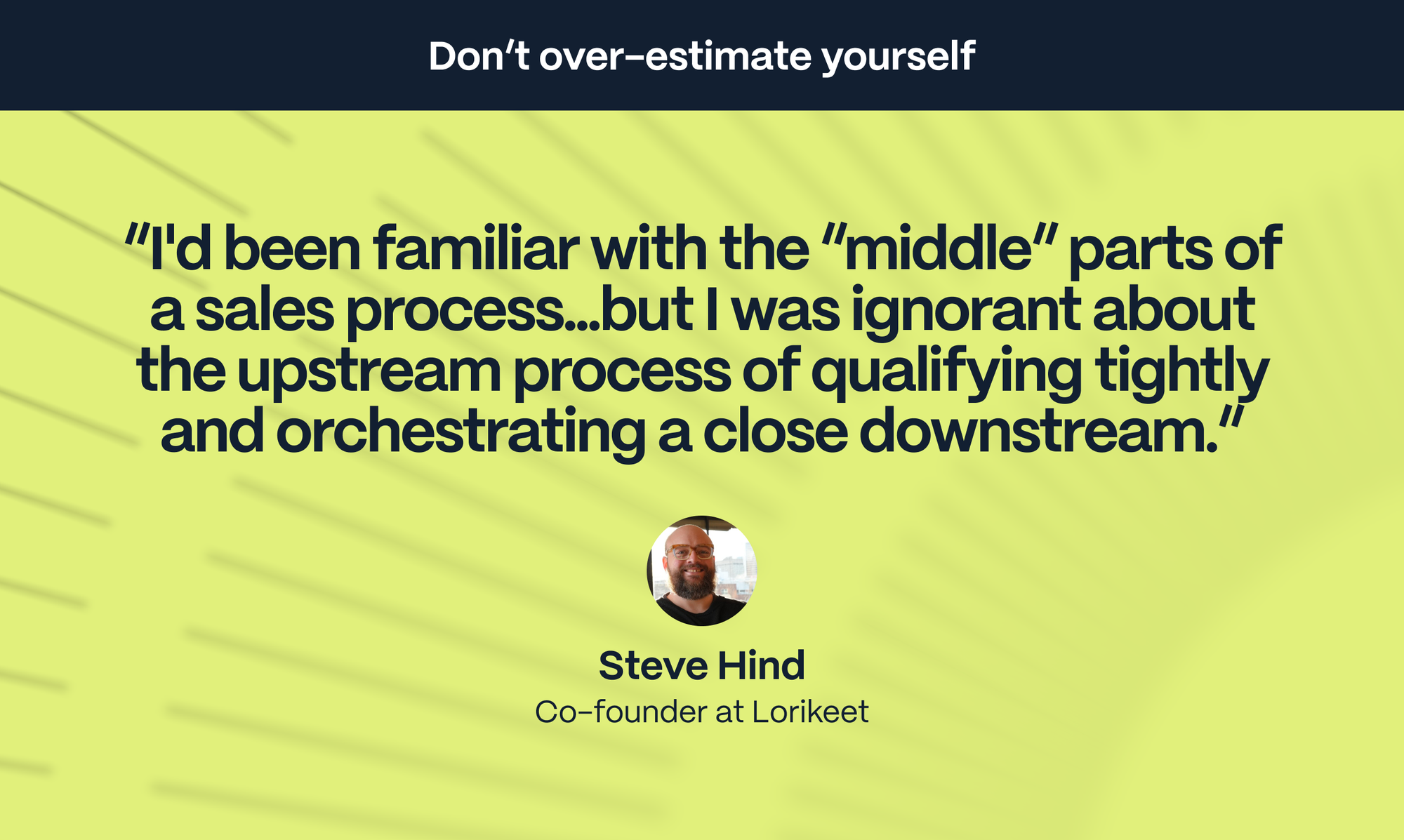
When I started selling, I would have rated myself a 6 out of 10. Then I worked with a group called Rampd, who train technical founders on selling, for about three months – reviewing all my sales calls, getting feedback, and getting a basic sales process in place.
Once I started working with them I realized I was a 2 out of 10 at best.
- Steve Hind, Co-founder at Lorikeet
If sales still feels gross or hard, reframe it. It’s just customer discovery with money on the line. That’s it.
Steve says:
The thing that made me much better at sales was dropping the idea from my head that I was “doing sales,” and treating it like a product manager would: interviewing a customer to understand their needs deeply, then using that to ideate on a solution.
As someone with a product and design background, I can’t agree more. Put on your product research hat to start. Then treat sales like a skill and learn it.
4. Hold off hiring your first sales person as long as possible
It’s easy to sit behind your computer each day and code or design, but you need to do the hard thing and talk to customers. Elaine from Tofu handled 400 sales cycles in the first six months – an average of five customers per business day. Because that’s what it takes.
No one can figure out your company DNA but you. And if you can’t close deals on your own, it’s going to be really hard to hire somebody that can.
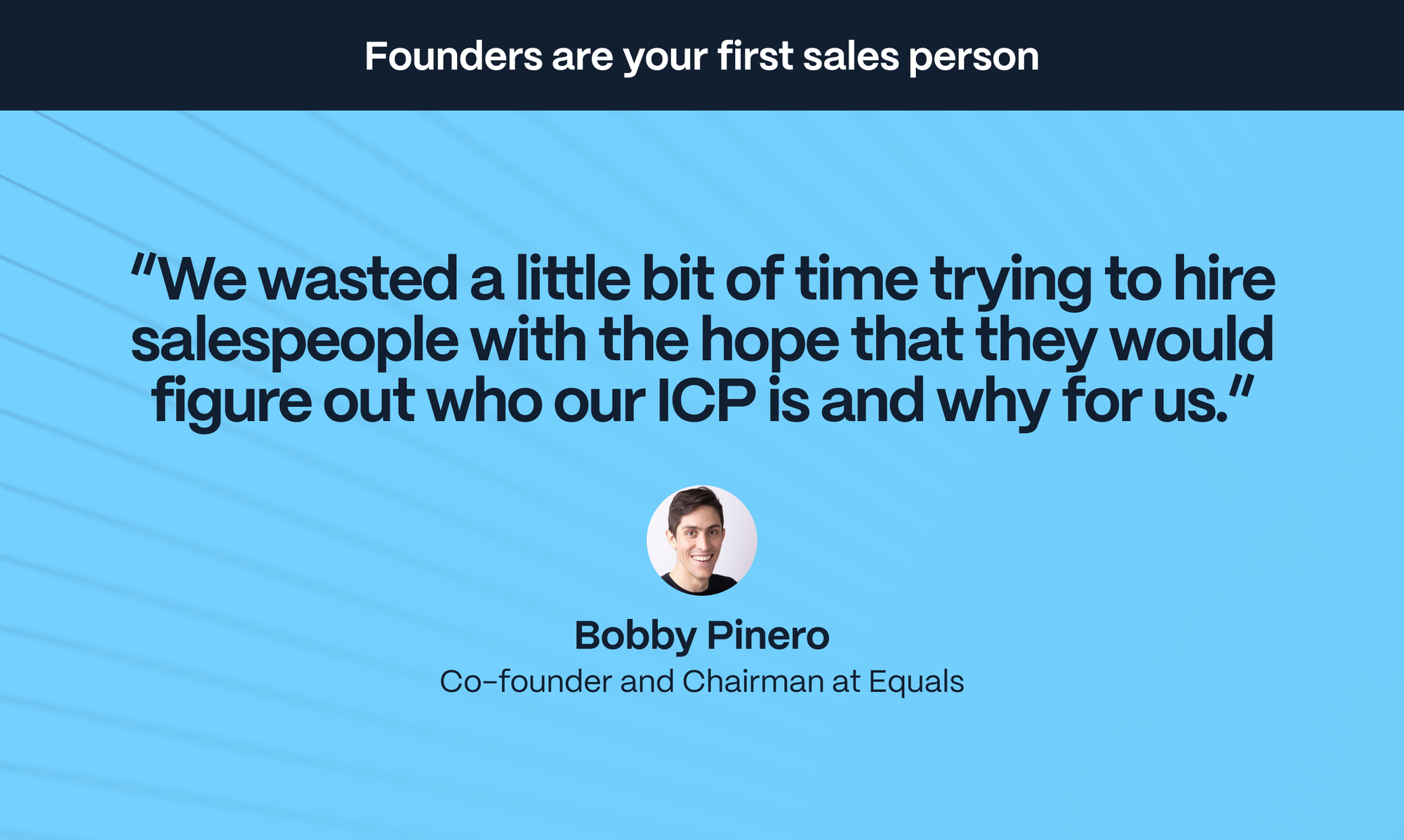
Originally, I didn't believe in founder-led sales. I was like, “Sales is a skill and you should just hire a salesperson who knows how to do it.”
Perhaps there are great early salespeople who would help you figure out who your ICP is and why. But I also believe there's a context and a passion that the founder has that is different. We as the founders had to figure that out as opposed to relying on a sales person.
And then we could bring in the people who could execute on it.
- Bobby Pinero, Co-founder at Equals
At Clarify, we actually made our first sales hire not to close revenue or escape from talking to customers, but to increase our learning velocity. We wanted to be even closer to customers.
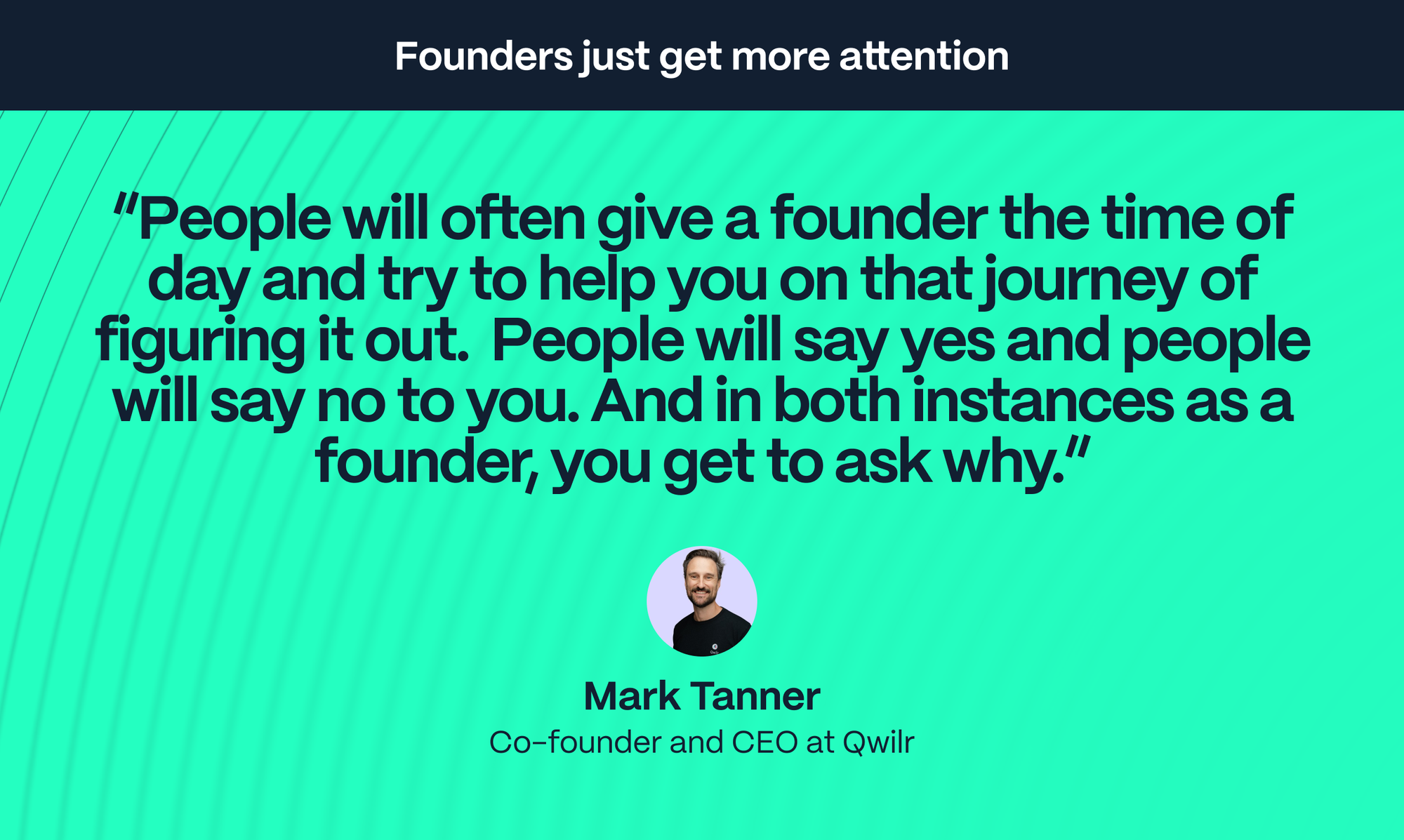
The founder-led sales journey isn’t something to check off and move on. It’s the fastest way to meld your vision with the market’s needs. It’s the work that sets your company up for success for years to come.
And when you think you’re ready, here’s my advice for finding your first sales person.
Get our newsletter
Subscribe for weekly essays on GTM, RevTech, and Clarify’s latest updates.
Thanks for subscribing! We'll send only our best stuff. Your information will not be shared and you can unsubscribe at any time.
